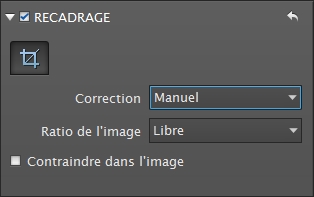
This involves determining which distorted pixel corresponds to each undistorted pixel, which is non-trivial due to the non-linearity of the distortion equation.
#Ptlens vs dxo viewpoint software
Software can correct those distortions by warping the image with a reverse distortion. Using this model, a single term is usually sufficient to model most cameras. For radial distortion, this division model is often preferred over the Brown–Conrady model, as it requires fewer terms to more accurately describe severe distortion. Using the same parameters previously defined. X u = x d + ( x d − x c ) ( K 1 r 2 + K 2 r 4 + ⋯ ) + ( P 1 ( r 2 + 2 ( x d − x c ) 2 ) + 2 P 2 ( x d − x c ) ( y d − y c ) ) ( 1 + P 3 r 2 + P 4 r 4 ⋯ ) y u = y d + ( y d − y c ) ( K 1 r 2 + K 2 r 4 + ⋯ ) + ( 2 P 1 ( x d − x c ) ( y d − y c ) + P 2 ( r 2 + 2 ( y d − y c ) 2 ) ) ( 1 + P 3 r 2 + P 4 r 4 ⋯ ), A graph showing radius transformations (from object to image) will be less steep in the upper (rightmost) end. Conversely, barrel distortion is actually a diminished radius mapping for large radii in comparison with small radii. A graph showing radius transformations (from object to image) will be steeper in the upper (rightmost) end. It will then be observed that these common distortions actually imply a nonlinear radius mapping from the object to the image: What is seemingly pincushion distortion, is actually simply an exaggerated radius mapping for large radii in comparison with small radii. In order to understand these distortions, it should be remembered that these are radial defects the optical systems in question have rotational symmetry (omitting non-radial defects), so the didactically correct test image would be a set of concentric circles having even separation-like a shooter's target. Radial distortions can be understood by their effect on concentric circles, as in an archery target. Other distortions are in principle possible – pincushion in center and barrel at the edge, or higher order distortions (degree 6, degree 8) – but do not generally occur in practical lenses, and higher order distortions are small relative to the main barrel and pincushion effects. In mustache distortion the quartic (degree 4) term is significant: in the center, the degree 2 barrel distortion is dominant, while at the edge the degree 4 distortion in the pincushion direction dominates. Mathematically, barrel and pincushion distortion are quadratic, meaning they increase as the square of distance from the center. It starts out as barrel distortion close to the image center and gradually turns into pincushion distortion towards the image periphery, making horizontal lines in the top half of the frame look like a handlebar mustache. Mustache distortion A mixture of both types, sometimes referred to as mustache distortion ( moustache distortion) or complex distortion, is less common but not rare. The visible effect is that lines that do not go through the centre of the image are bowed inwards, towards the centre of the image, like a pincushion.Ĭonvex (plus) spherical lenses tend to have pincushion distortion.

Pincushion distortion In pincushion distortion, image magnification increases with the distance from the optical axis. Ĭoncave (minus) spherical lenses tend to have barrel distortion. In a zoom lens, barrel distortion appears in the middle of the lens's focal length range and is worst at the wide-angle end of the range.


Fisheye lenses, which take hemispherical views, utilize this type of distortion as a way to map an infinitely wide object plane into a finite image area. The apparent effect is that of an image which has been mapped around a sphere (or barrel). Barrel distortion In barrel distortion, image magnification decreases with distance from the optical axis. These radial distortions can usually be classified as either barrel distortions or pincushion distortions. Although distortion can be irregular or follow many patterns, the most commonly encountered distortions are radially symmetric, or approximately so, arising from the symmetry of a photographic lens.


 0 kommentar(er)
0 kommentar(er)
